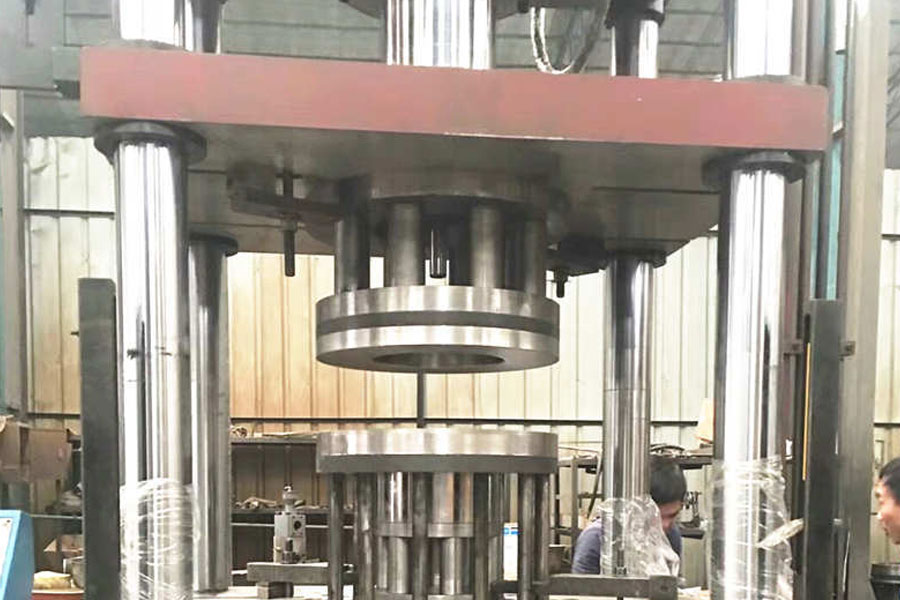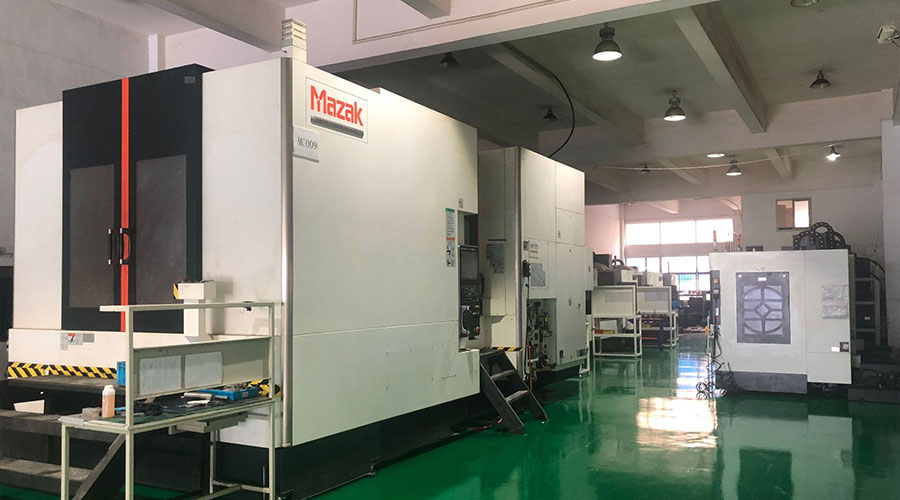Các vấn đề thường gặp và giải pháp cho khuôn đúc sâu bằng thép không gỉ
|
Stainless steel is widely used in industrial production because of its excellent performance, but its dập performance is poor, the surface of the parts is easy to scratch, and the mold is prone to bond tumors, which greatly affects the quality of dập and production efficiency. This requires the dập process to start from the aspects of mold structure, mold materials, heat treatment and lubrication, improve the quality of parts and mold life, and better solve the problems in the stainless steel dập quá trình. |

The Stamping Features Of Stainless Steel Sheet
- (1) Defects such as high yield point, high hardness, significant cold hardening effect, and cracks.
- (2) The thermal conductivity is worse than that of ordinary carbon steel, which leads to the large deformation force, the punching force and the drawing force.
- (3) The plastic deformation is severely hardened during deep drawing, and the thin plate is easy to wrinkle or fall off during deep drawing.
- (4) Adhesive tumors are prone to appear in the deep drawing die, causing serious scratches on the outer diameter of the part.
- (5) It is difficult to achieve the expected shape during deep drawing.
The Solution Of Stamping Stainless Steel Sheet
The problem of adhesion nodules in the deep drawing process of stainless steel sheet has always plagued the production site and brought great troubles to the producers. However, because the formation of adhesion nodules involves tribological problems, there are many influencing factors. At present, we can only propose measures from different angles to prevent the formation and reduction of adhesion tumors.
Material selection and heat treatment of the working part of the mold
In view of the adhesion tumor problem, the choice of mold material should be based on the affinity between the stainless steel sheet and the mold material. Attention should be paid to two points: one is to choose a mold material with strong resistance to adhesion, and the other is a wear-resistant and friction-reducing mold material. Generally speaking, metals with the same type of metal lattice, lattice spacing, electron density, and electrochemical properties have mutual attraction, strong dissolving ability, and easy adhesion together, resulting in a larger friction coefficient. The mutual solubility of Cr, Ni and Fe is large, so it is more prone to bond nodules when drawing with a steel die. Practice has proved that the use of cast aluminum bronze and duralumin bronze has better anti-sticking effect; the use of tungsten carbide steel bonded cemented carbide to make the die has a life of several times longer than that of Cr12Mov soft nitriding, and it does not stick to the mold; if the code is used 3054 alloy cast iron only needs to be flame quenched on the surface of the mold, and no adhesion tumors will appear on the surface of the mold. In addition, cemented carbide inserts can be used in the vulnerable parts of the mold, which have excellent compression resistance, superior wear resistance and long-lasting surface roughness and dimensional accuracy control. However, due to price issues, it is less used in production.
Surface processing of the working part of the mold
The surface quality of the stainless steel drawing die is very demanding. Lower surface roughness can reduce friction and improve adhesion resistance. After the drawing die is ground, it is more important to eliminate the cnc machining traces. The grinding and polishing processes are often neglected in mold manufacturing. It should be pointed out. In the entire mold quá trình chạy máy, polishing work should account for one-third, because the appearance quality of stainless steel products depends to a large extent on the mold polishing technology. The surface roughness of the mold is reduced, and the number of grinding of the mold is correspondingly reduced, and the service life of the mold is correspondingly improved. If the surface of the mold is not polished enough, and the stainless steel sheet is deepened, it is easy to cause the characteristics of adhesion tumors, and the drawn product will have serious scratches. However, polishing the scratches on the product is time-consuming and ineffective. Therefore, we should work hard in the mold polishing process. Only when the mold surface machining accuracy is improved can the product scratches be reduced, and the mold repair life can be greatly improved.
In recent years, various new polishing technologies and polishing tools have appeared in China. New technologies and equipment such as ultrasonic, electrolytic polishing, abrasive jet, extrusion honing, etc. have been developed. According to the information, the electrochemical polishing experiment was carried out on the molds of CrWMo, 3Cr12W8V, and Cr12, which proved that the polishing can change the surface roughness of the mold cavity from the original Ra3.2-Ra1.6 in only 5-10 minutes. On the basis of this, it is reduced to Ra0.4-RaO.2. At the same time, electrochemical polishing can also increase the surface hardness to improve wear resistance. For another example, the ultrasonic polishing machine can be used for fine polishing of the nitrocarburized cavity, which can avoid the shortcomings of manual polishing that easily damage the nitride film. We should actively apply and summarize the new polishing technology.
Process lubrication
From the drawing characteristics of stainless steel, it can be seen that the formation of adhesion tumors is due to the direct contact between the tấm kim loại and the mold. This is a theoretically indisputable fact. Therefore, the primary point of choosing a lubricant or coating agent is in the tấm kim loại deep drawing process. The middle lubricating film does not rupture from beginning to end and plays a role of lubrication. “Anti-viscosity and friction reduction” is the basic starting point for choosing lubricants.
Generally, adding a certain proportion of extreme pressure additives to the lubricant or using solid lubricants can achieve better results. This is mainly to improve the lubricating ability of the lubricant on the metal surface to produce sulfur, phosphorus, and chlorine compounds that chemically react with the metal surface at high temperatures to generate iron sulfide, iron chloride, etc. to enhance the strength of the oil film and enhance the adsorption capacity , Good lubrication of mold and product surface. Solid lubricants are filled into small pits on the metal surface to minimize dry friction contact points. In addition, solid lubricants have high stability, can also play a lubricating effect at high temperatures, and are not prone to mold adhesion. Usually in production according to the degree of product deformation and actual situation selection and formula (the formula can be found in the relevant stamping manual).
In addition, fats, mineral oils, synthetic greases, greases, soaps can also be used to form lubricants, and have a better effect on stainless steel shallow drawing. Organic mineral oil containing water-soluble emulsion or diluted with oil can also be used for shallow drawing. Adding graphite to the lubricant can play a role in anti-adhesion, but it is more difficult to clean after adding graphite. If you choose 3054 alloy cast iron to make the mold, the general lubricant is better.
According to the data, the sheet material can be treated with a salt bath to obtain a layer of soft metal mold (such as copper, zinc, lead, etc.) on the surface, and mold sticking will not occur during the deep drawing process. In addition, in recent years, an organic polymer lubricating film with polyvinyl butyral as the main body has been developed. The surface of the blank is treated to obtain a layer of organic lubricating film, which can deform together with the sheet material, which not only avoids the mold The direct contact with the sheet material prevents mold sticking and ensures the surface quality of the product. Moreover, the friction between the mold and the sheet material is greatly reduced, and it has a good lubrication effect. The experiment shows that the effect is good.

 Cửa hàng PTJ CNC sản xuất các bộ phận có tính chất cơ học tuyệt vời, độ chính xác và độ lặp lại từ kim loại và nhựa. Phay CNC 5 trục có sẵn.
Cửa hàng PTJ CNC sản xuất các bộ phận có tính chất cơ học tuyệt vời, độ chính xác và độ lặp lại từ kim loại và nhựa. Phay CNC 5 trục có sẵn.